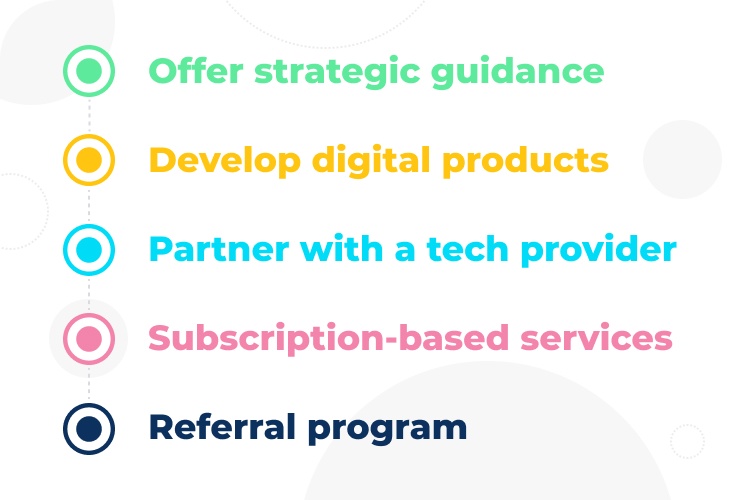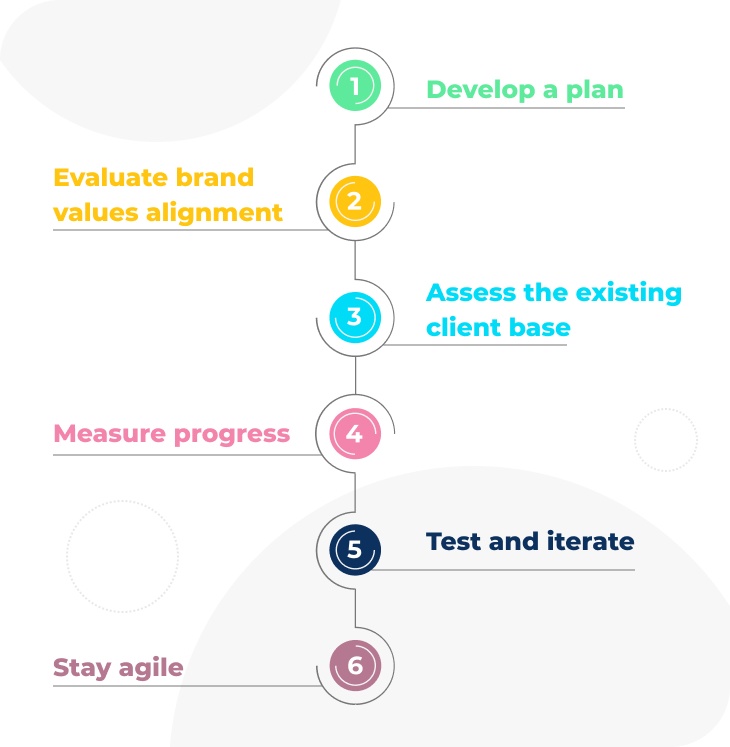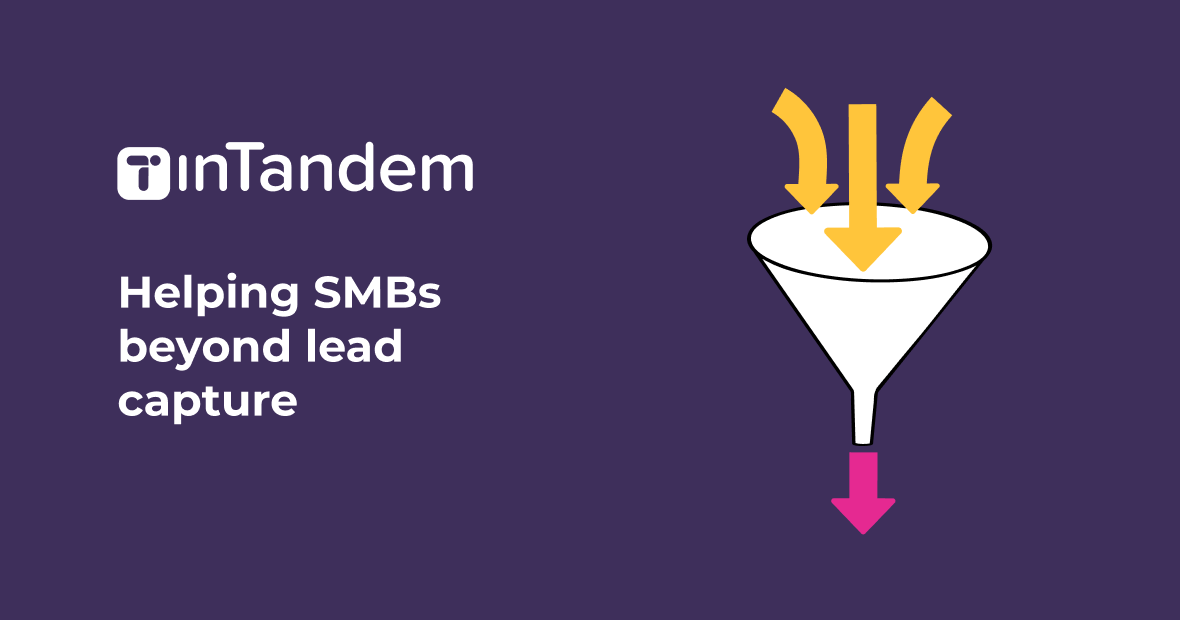As an agency leader, thinking creatively about new ways to diversify your revenue streams beyond your core services is vital. Through diversifying revenue streams, your agency can reduce its dependence on any single source of revenue and better weather economic downturns. This not only provides financial stability for your agency but also makes your business more attractive to potential buyers in the future.
Marketing agencies generate revenue through four different types of revenue streams:
- Transactional: one-time sales or fees for individual products or services.
- Project-based: a defined outcome or specific services for a fee.
- Service-based: think of this as a retainer for projects with your clients.
- Recurring: this is usually a subscription for post-service work e.g. website hosting, software subscriptions, etc.
Each type of revenue stream has its own advantages and disadvantages, and understanding how they work can help you develop a well-rounded revenue diversification strategy that aligns with your business model.
In this article, we will explore
- Creative ways to diversify your revenue streams and expand your overall revenue potential as a business.
- How to research and identify new revenue stream opportunities.
- Specific tactics you can implement to diversify your income sources.
- A plan for implementing new revenue streams and measuring success.
By the end of this article, you will have gained a deeper understanding of why revenue diversification is important and what tools and strategies you need to implement in order to achieve your diversification goals.
Exploring new revenue streams for your business
When exploring new revenue streams, it’s important to research potential opportunities that align with your business model and goals. This could include identifying untapped markets (which could be upstream or downstream from your current clients), exploring complementary products or services, and/or leveraging existing customer relationships. Although the opportunities are vast, it is important to approach new revenue streams with caution and to consider potential challenges that may arise.
| Potential challenges | Tips to overcome the challenge |
| A lack of understanding of a new market or new customer base. | Conduct thorough market research and customer analysis to determine whether there is enough demand for your new service offering. |
| Barriers to entry: access to gatekeepers, competition from established players in the market, or regulatory hurdles (you see this when organizations have a preference to work with local firms). | Assess the potential barriers prior to investing time and resources to determine whether they are surmountable or not. |
| Building the necessary infrastructure or systems to support a new revenue stream. This could include investing in new technology, hiring new staff, or developing new processes and procedures. | It’s important to consider the costs associated with implementing a new revenue stream and to develop a plan for allocating resources effectively. |
| May need a shift in the company culture or mindset. | It’s important to communicate the vision and strategy for the new revenue stream to all employees and stakeholders, and to ensure that everyone is aligned and committed to making it a success. |
Despite the potential challenges, exploring new revenue streams is a necessary step in building a sustainable and resilient business. By taking the time to research and identify potential opportunities and develop a plan for addressing potential challenges, businesses can successfully diversify their revenue streams and drive growth further than originally planned.
5 Creative ways to diversify revenue streams
Once you’ve identified potential new revenue streams and have assessed the potential challenges, it’s time to explore specific tactics for diversifying your income sources in creative and effective ways.
Here are five different ways agencies can diversify their revenue streams:

Offer strategic guidance
Many agencies have expertise in a particular category or with a specific audience and can leverage that knowledge by offering strategic services. This could include workshops, webinars, coaching, or training services that help clients improve their operations, increase efficiency, or achieve their goals.
By offering these types of services, businesses can generate a new stream of recurring revenue and establish themselves as experts in their field.
Develop digital products
Agencies can leverage their expertise and create and sell digital products such as e-books, courses, or software. These products can be a great way to generate recurring revenue, as they can be sold to a large audience without the need for physical inventory or shipping costs.
Additionally, digital products can be created once and then sold repeatedly, making them a scalable source of revenue and passive income for years to come.
Partner with a tech provider
Partnering with a technology provider can help businesses diversify their revenue streams by expanding their offering to include a new product or service. This could include offering a new software tool, platform, or app that complements existing products or services.
By partnering with a technology provider, businesses can take advantage of the provider’s expertise and technology, and gain access to an entirely new or complimentary market. And that doesn’t mean it can’t be under your brand.
These days, many tech providers offer a white lableled solution that enables your brand to be at the forefront of the partnership. Overall, tech providers often do a great job of aggregating communities of folks with similar needs. By partnering with a tech provider, agencies can leverage their ecosystem to gain more visibility.
Subscription-based services
Subscription-based services are a great way to generate recurring revenue while providing value to customers. This could include offering a membership program or a subscription-based service that provides ongoing access to products or services.
Similar to developing digital products, subscription-based services, if implemented effectively, can increase passive revenue streams.
Referral programs
An agency referral program is a marketing tactic that encourages you and your colleagues to share new business opportunities. The program is built around the idea that you will provide a financial incentive when someone refers new business. Similarly, you will receive a financial incentive when you refer new business to your colleagues.
Experience has shown that it is best to create a referral system with folks who offer related but not similar services, are not in competition with you, and who have a positive brand image. A recommendation from a trusted brand will improve your brand perception and perceived authority. As an example, say you sell design services and you often have clients who need SEO services. In this scenario, you can develop a referral partnership with trusted SEO agencies. When your clients need SEO help, you can refer them to your partners. And when your partners’ clients need design work, they’ll be sent your way in return.
Successfully implementing new revenue streams

Once you’ve identified new revenue streams and have chosen which strategies to pursue and which ones not to, it’s time to begin implementing them effectively to ensure that they’re just as successful in practice as they are in theory.
Here are some tips on how to implement new revenue streams and ensure that they are successful:
Develop a plan
Before launching any new revenue streams, it’s important to include a detailed plan that identifies human resources, financial resources, a timeline, and key performance indicators (KPIs) to measure success. This plan should also identify any potential risks or barriers to success and include contingency plans for addressing these issues.
Evaluate brand values alignment
Thinking through what you value as an agency, determine whether the new revenue stream aligns with your agency values and goals. Although a new revenue stream might present an opportunity to increase money coming into your business, it might not be the right opportunity based on your brand values.
Assess the existing client base
It is important to evaluate your agency’s existing client base and identify opportunities to cross-sell or upsell additional services or products. This might include gathering feedback from your clients to better understand their wants and needs.
Measure progress
Once your new revenue streams are up and running, it’s important to track their progress and measure their success. This could include tracking customer acquisition, revenue growth, and retention rates. By measuring progress, you can identify any areas where the new revenue stream may need to be adjusted or optimized, and can make data-driven decisions to improve its performance.
Test and iterate
This is not a launch and forget it process. Implementing new revenue streams is an ongoing process, and it’s important to test and iterate your strategy as you go. This could include experimenting with different pricing models, marketing strategies, or service features to see what works best for your business and your customers.
Stay agile
Finally, it’s important to stay agile and adaptable when implementing new revenue streams. The agency landscape is constantly changing, and it’s important to be able to pivot quickly if something isn’t working. By staying agile and willing to adapt, you can ensure that your business is always moving in the right direction and can capitalize on new opportunities as they arise.
By developing a detailed plan, measuring progress, testing and iterating, and staying agile, agencies can successfully diversify their revenue streams and drive growth for years to come.
Diversify your agency’s revenue streams with ease
Diversifying revenue streams is essential for driving growth and increasing agency resilience. By exploring new revenue streams, agencies can identify new opportunities for growth and mitigate the risk of relying too heavily on any one revenue stream.
To successfully diversify revenue streams, agencies can pursue strategies such as offering strategic guidance, developing digital products, partnering with a tech provider, and referral programs. Once new revenue streams are identified, agencies should develop a plan, measure progress, test and iterate, and stay agile to ensure success.
My advice is to go on the offense and take action by exploring new revenue streams that align with your business model and goals. By diversifying revenue streams, you can position your agency for long-term growth and success without the burden of uncertainty and lack of preparedness.
Good luck!
vcita partners with leading organizations that serve SMBs to propel forward a joint vision of empowering SMB digital transformation. To learn more, check out vcita’s partnership program.


























